The color of the walls in the living room sets the tone for the entire room, allowing you to create the necessary atmosphere in the room. Therefore, the choice of colors must be approached very carefully.
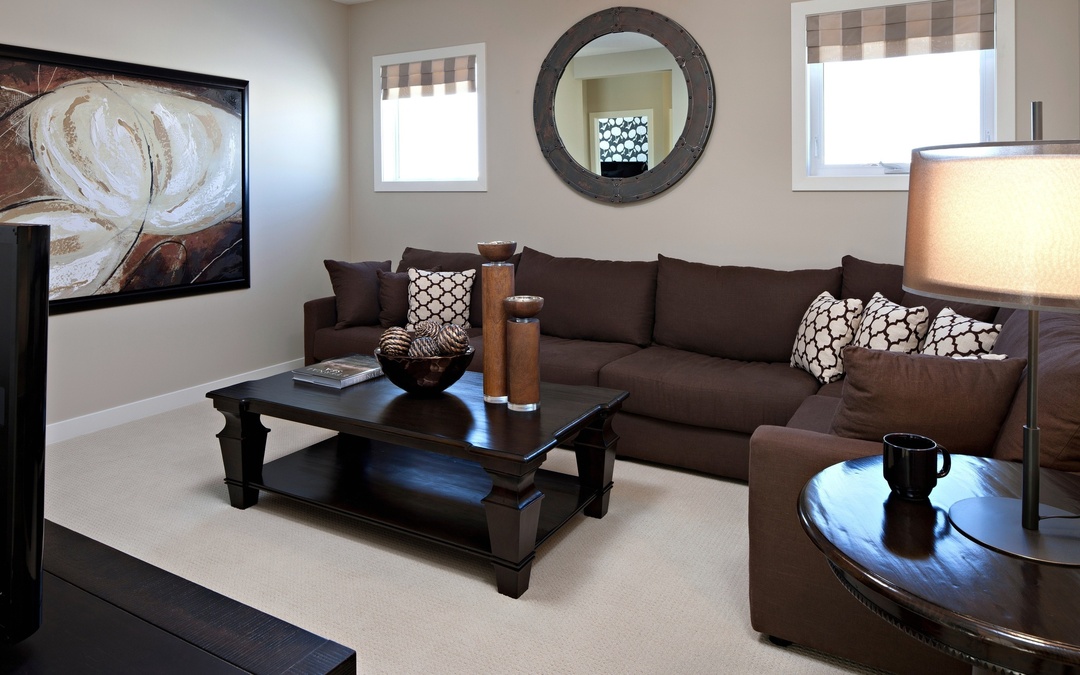
The color of the walls in the living room is the overall mood, the character of the main room in the house.
Features when choosing a color for the living room
Content
- Features when choosing a color for the living room
- We take into account the color of furniture and wallpaper in the living room
- Color combinations
- cool colors
- Warm colors
- Popular colors in the living room interior
- Grey
- Pink
- Yellow
- White
- Black
- Brown
- Beige
- Orange
- Red
- Violet
- Blue
- Green
- Zoning a room using the right interior color
- Tips for the right color combination in the living room interior
- VIDEO: Fashionable and bright colors for the living room.
- Photos of a well-chosen color for the design of the living room:
The range of colors can not only influence the mood, but also literally reshape the space, visually changing its size. Therefore, in order not to get an unpleasant result, when choosing a color, it is worth considering:
- area of the room;
- the level of illumination, depending on the side of the world, which the windows face;
- functional requirements;
- personal preference, which may be based on psychological aspects of flowers or feng shui.
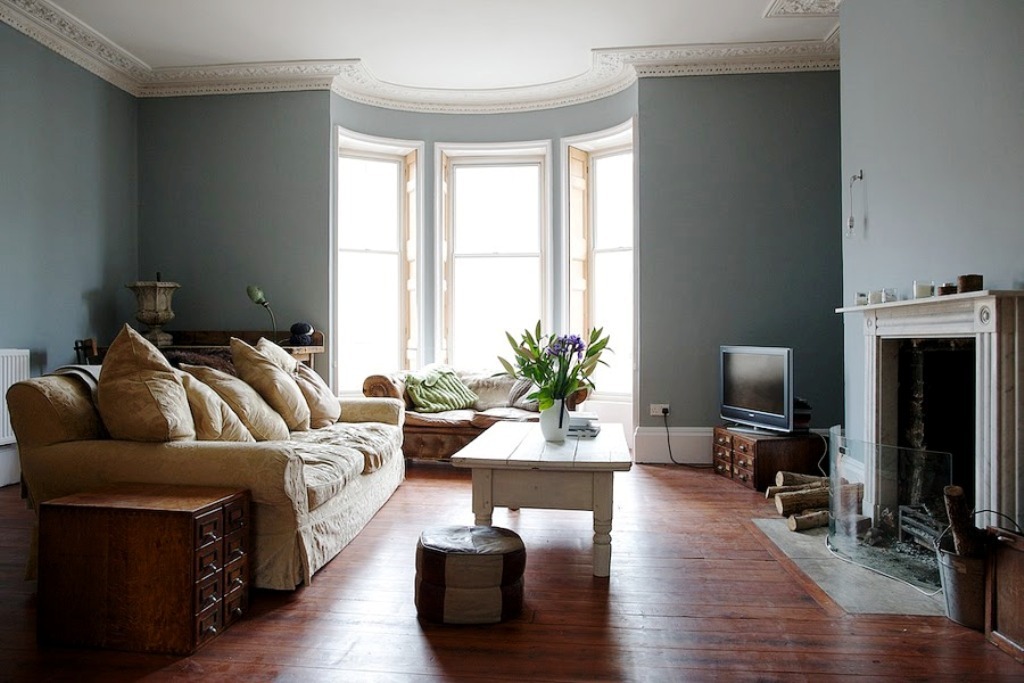
Each color has its own psychological characteristic and should be considered before making a color decision.
We take into account the color of furniture and wallpaper in the living room
It is best when the living room is decorated in accordance with the rules of harmony. That is, the shade of the walls itself is not as important as the aesthetic-looking combination with the furniture.

The shades that are chosen for the living room are divided into typical and fashionable.
Thus, natural duets and trios are a classic combination. For example, a combination of earth and sky colors, wood or buds and greenery. That is, brown furniture will successfully complement the living room in pastel olive or pistachio colors.
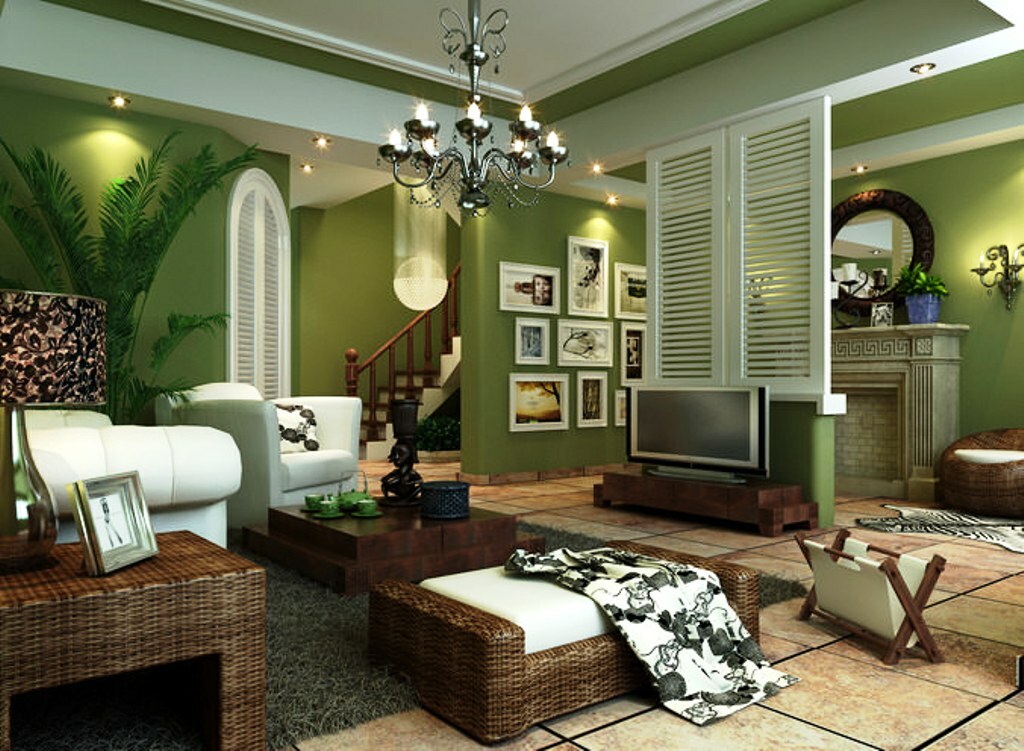
This color is fashionable, it evokes associations with nature and greenery, the natural beginning.
The beige palette goes well with various natural shades. It is also considered a good option to use tones similar in scale, for example, azure, pistachio and emerald.
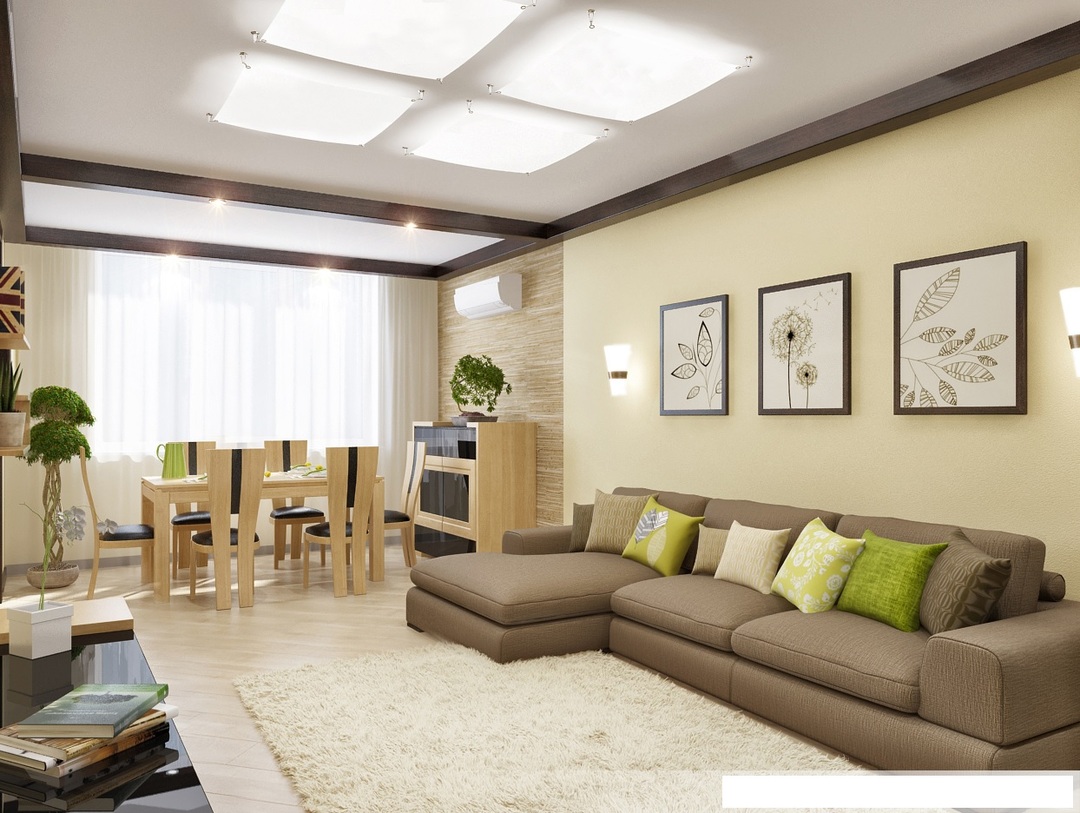
A room with beige walls turns out to be warm and cozy, and its mood can be easily changed with the help of decor.
Note! The achromatic palette is considered universal, so white, gray or black finishing colors can be complemented by furniture of any shade.
Color combinations
There is the following classification of color tones:
- cold: blue, light blue, turquoise, green, olive, brown, lilac;
- warm: yellow, red, orange; beige, pink, burgundy;
- neutral: black and white.
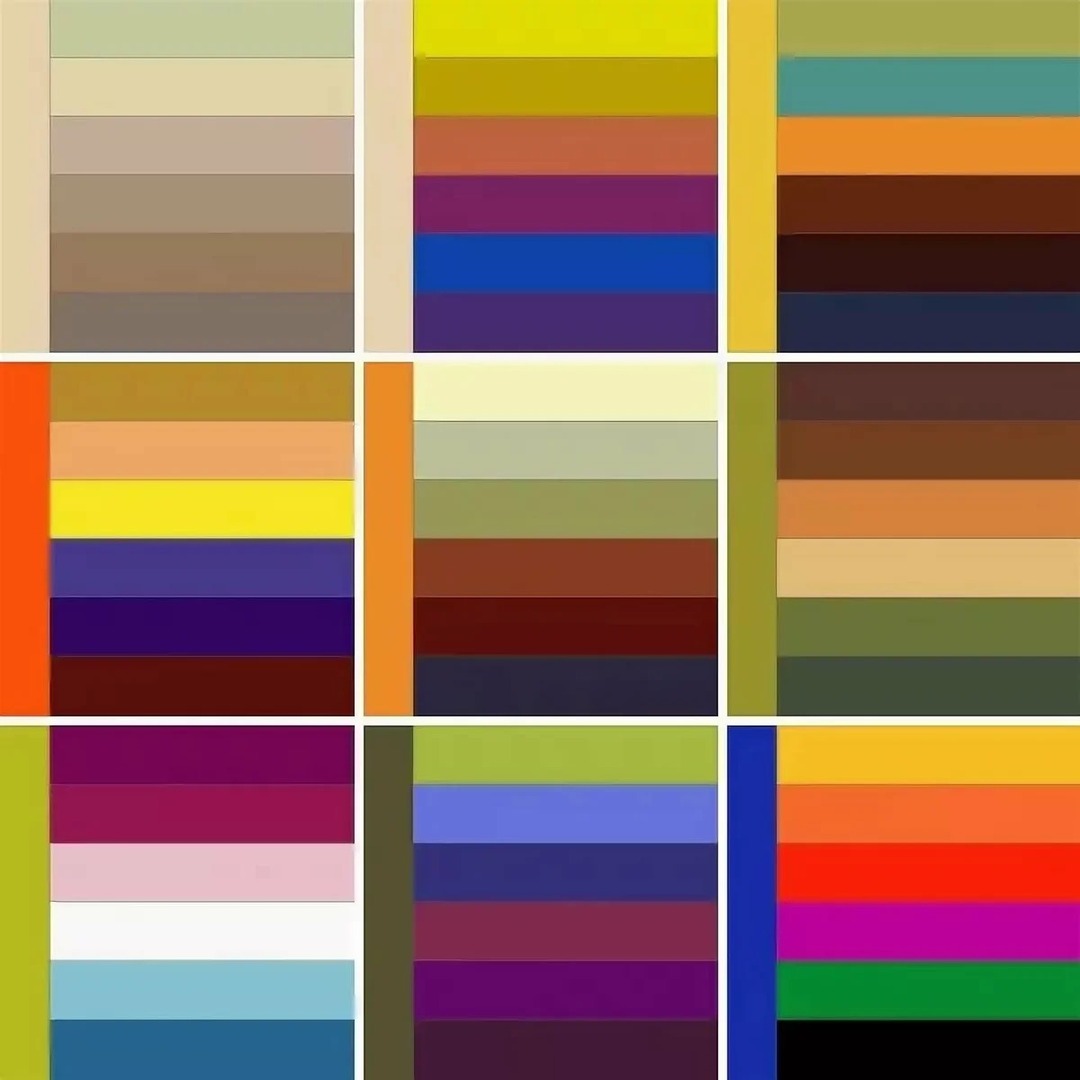
With the help of a wide variety of shades of the palette, combinations of contrasts or tones of the same color range are selected.
When combining warm and cold colors, you should adhere to the following rules:
- Choose the dominant range, cold or warm, and complement it with the opposite accents.
- Use the principle of balancing one tone at the expense of another, such as in a combination of beige and turquoise;
- Apply mutual reinforcement, which allows shades to deepen each other. This effect is seen in the combination of Marsala and Emerald.
- Use the effect of desaturation, dimming. An example is the combination of a neutral background and bright accents.
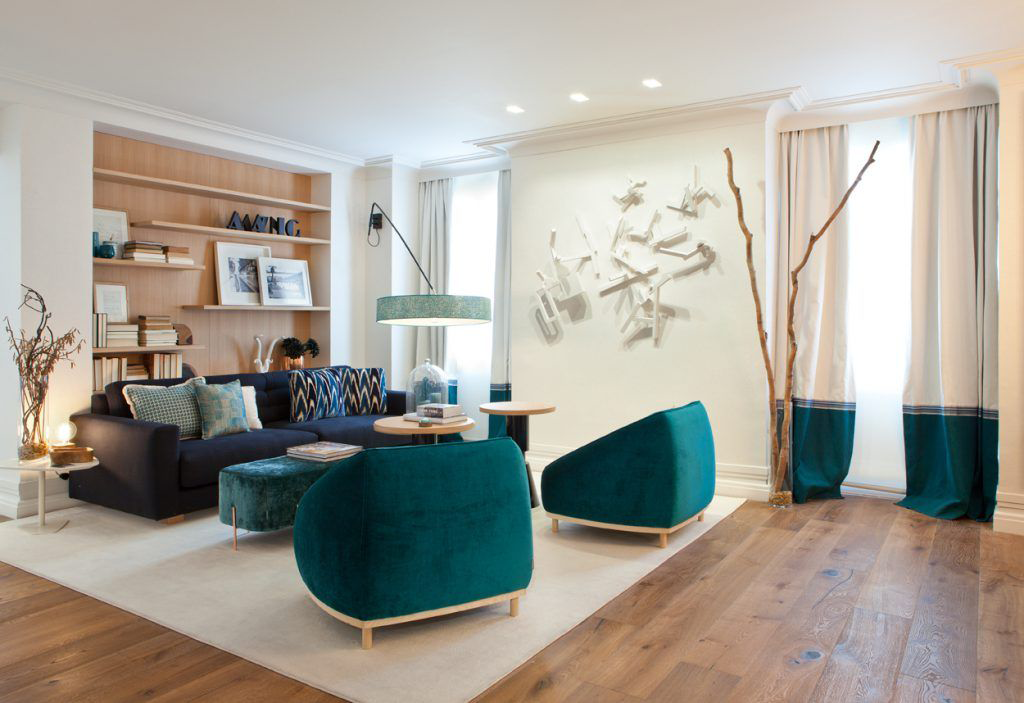
Turning on your imagination, you can create unrealistically beautiful walls individually for your guest room.
Note! By combining colors, you can achieve the effect of adjusting the space. So, cold tones visually expand the space, making it deeper, and warm ones reduce it.
Another interesting way to combine colors of the same scale is to create a gradient, or ombre. This technique consists of combining shades from lightest to darkest. At the same time, it is important to choose such a combination of colors so that the living room looks stylish, and not multi-colored.
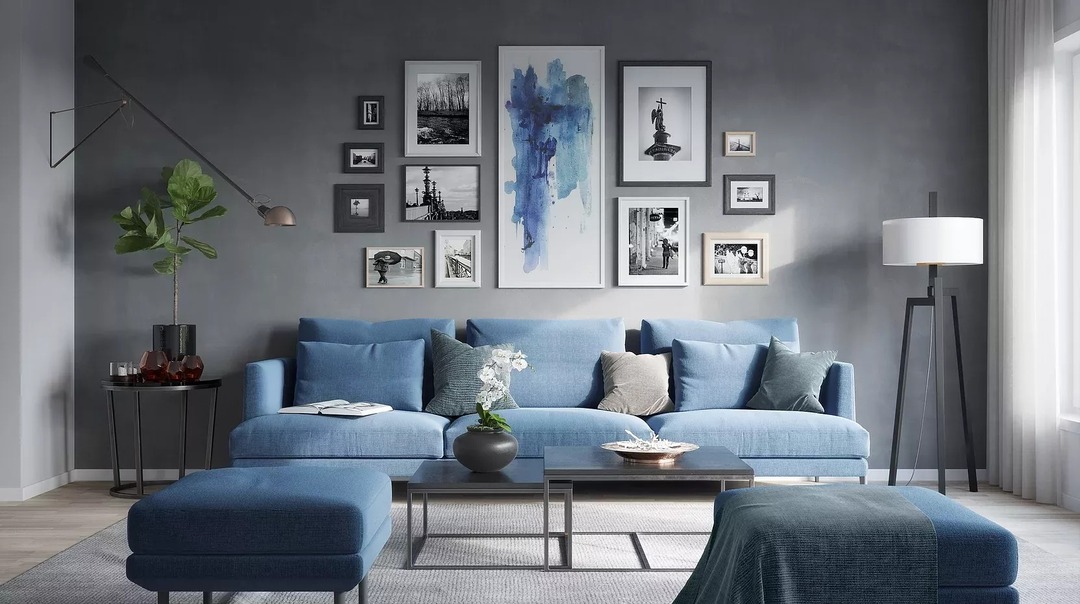
The most common gradients are blue and gray.
cool colors
These colors are suitable for either sun-drenched living rooms or for a modern, restrained style. However, you can make a room in cool colors cozy by adding light shades for the background, accents from a warm palette and wood furnishings.
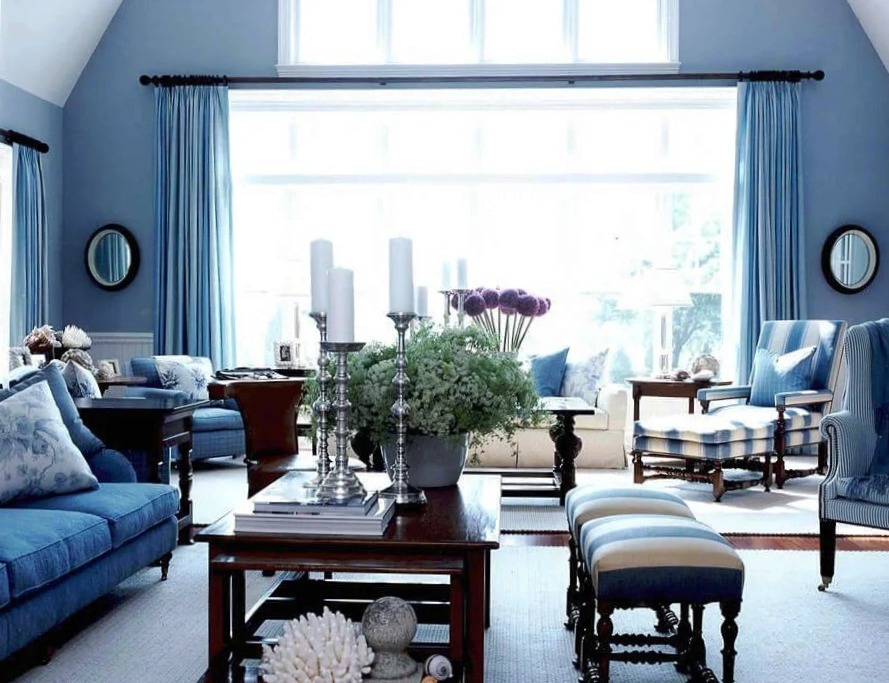
If the windows face south, then the living room can be cold shades, since there is enough daylight in the room.
Warm colors
The use of warm colors will create a cozy and pleasant atmosphere. At the same time, more saturated shades look homey, and lighter ones - more sophisticated.
The lightest and most neutral creamy tones look elegant and unobtrusive. Depending on the color of the accents, they are suitable for any interior decoration style.
Creamy tones are perfect for laconic minimalism, restrained classics or a cozy high-tech option. They can be easily combined with a wide variety of shades.
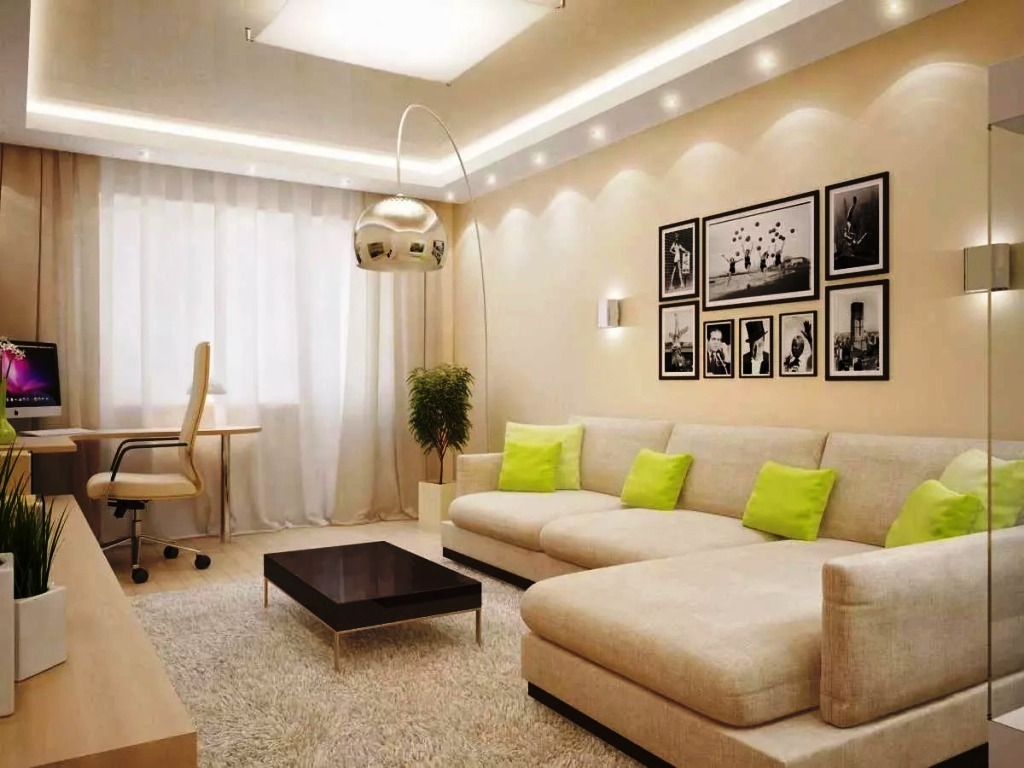
For the eastern side, it is better to use warm light colors, for example, soft pink, honey, peach.
The peach room creates a special atmosphere of a light summer season, while the living room looks gentle and romantic. You just need to properly complement the design with furniture, using, for example, simple wooden furniture and natural white textiles.
A rather bold option is the choice of terracotta color. It should not be used over too large an area due to its distinctive brightness and saturation.
Warm tones can be from a green or pink palette. To use them, you can include yellow notes in the shades, which will create a kind of mixture of halftones, combining opposite temperature spectra.
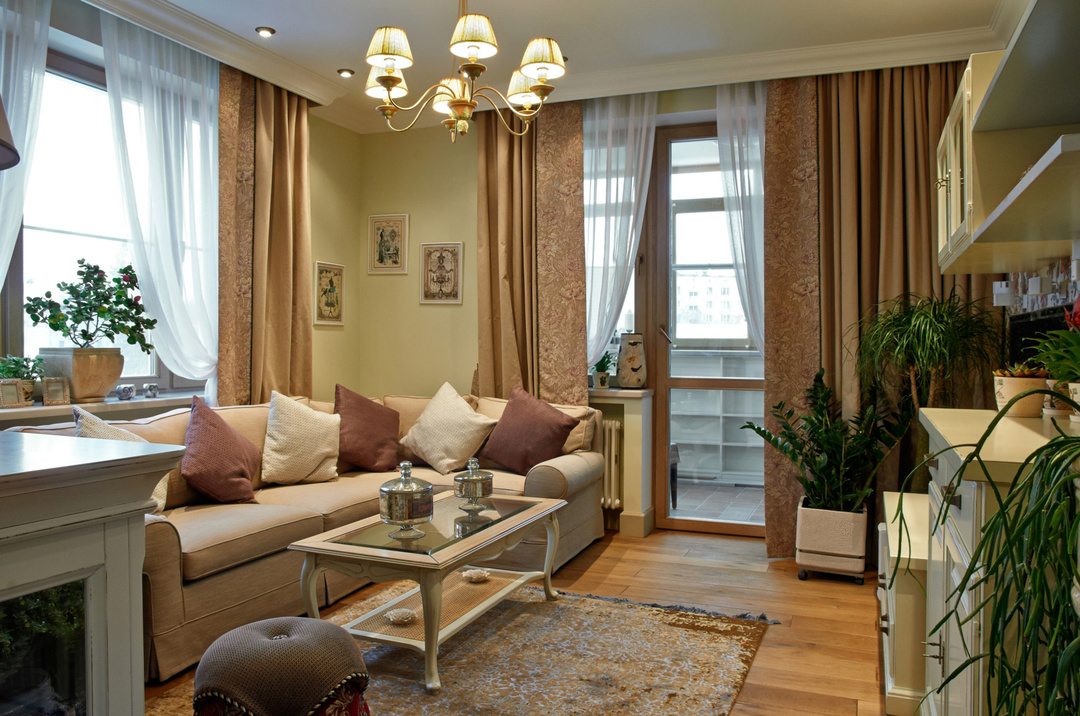
For the north side, soft and warm shades are suitable, they compensate for the lack of sunlight.
Popular colors in the living room interior
Grey
The room in gray looks restrained, unobtrusively elegant. It is better to use it in light rooms, but it should not be used as a basis, as it is fraught with general dullness of the situation. It is better to choose light, closer to silver, shades, diluting them with bright blotches, as in a gray-blue or gray-yellow living room. Blue, pink and white colors will go well.
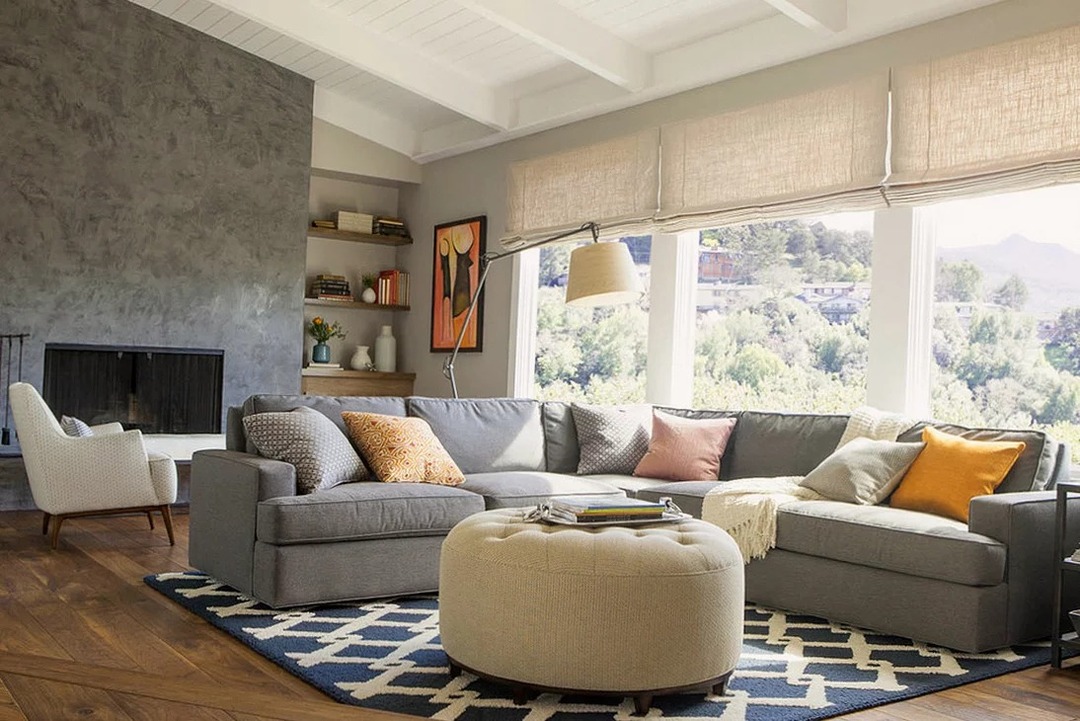
A modern and trendy color that is often used to create a loft, classic, modern style.
Note! An interesting idea is to decorate the living room in gray tones, as in a black and white photo, complemented by one bright piece of furniture, for example, a rich burgundy sofa. In this case, the living room will look as if in burgundy colors.
Pink
This color strongly shifts attention to itself, so you should not use it to decorate all the walls in the living room, especially using saturated shades. It is better to choose soft pink and combine it with gray, black or beige. Depending on the complementary colors, a pink living room can look both warm and cold.
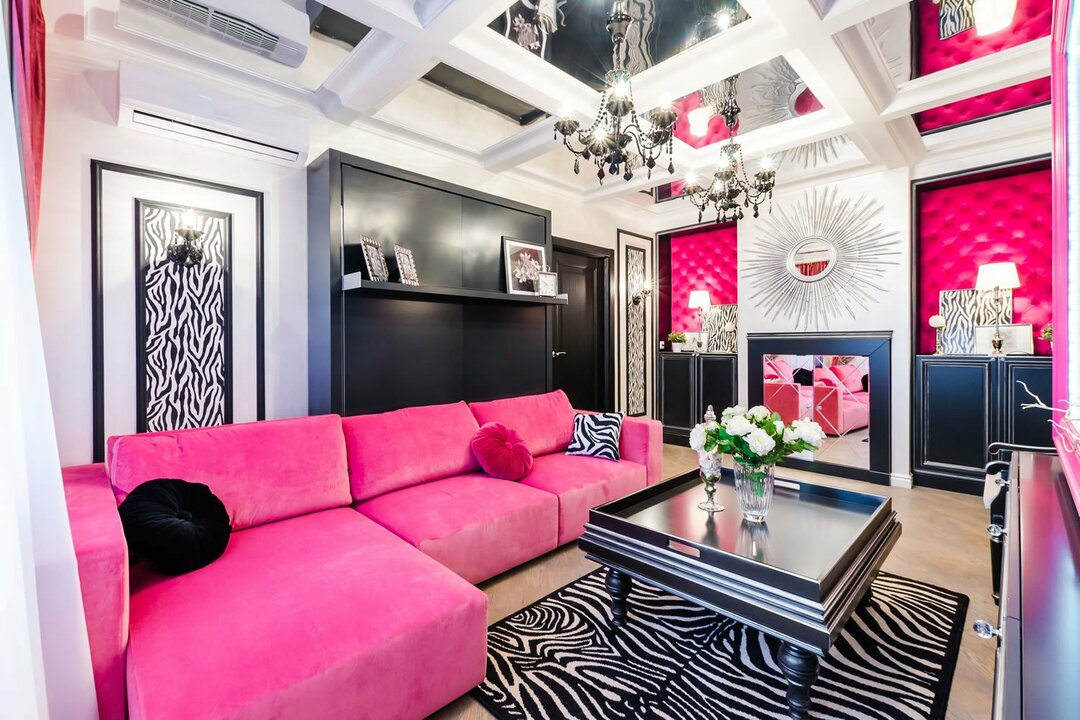
Pink symbolizes kindness, joy, femininity, friendliness. Adjusts to daydreaming.
Yellow
This sunny summer color can cheer you up, causing positive emotions. It can be used both to create spectacular contrasts and to combine similar shades. Often, yellow wallpaper in the living room interior is used in equal proportions with a different tone, for example, orange, white, purple or blue.
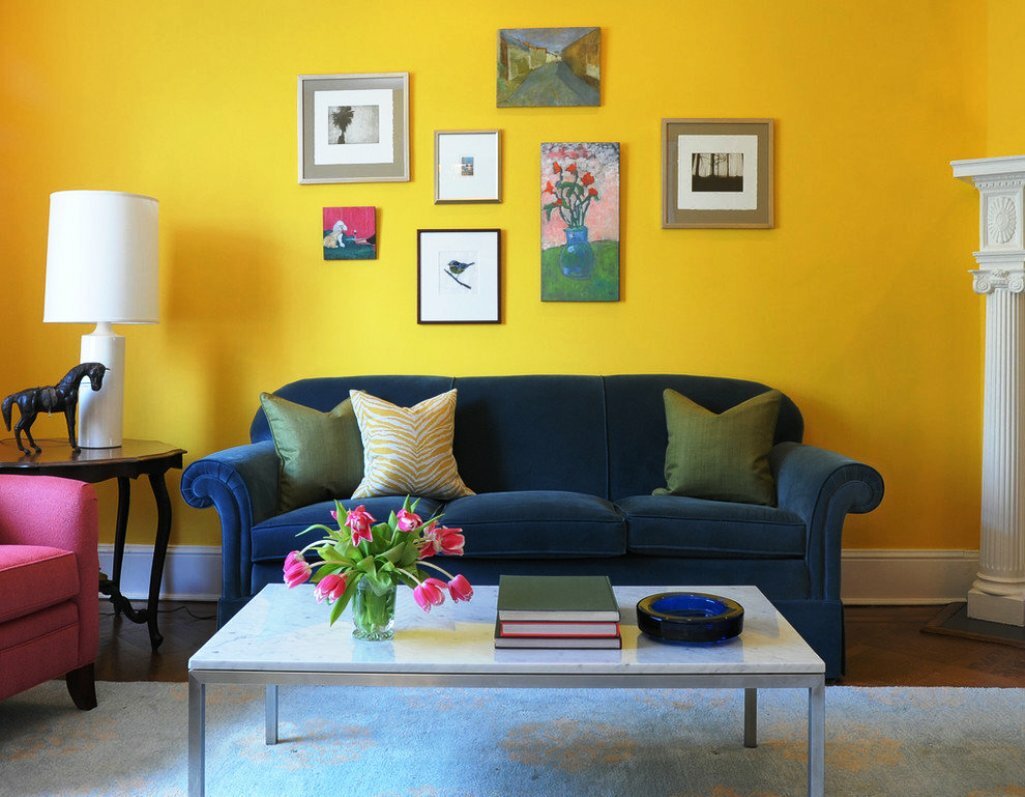
Bright, summer and sunny color, it is subconsciously associated with something warm and pleasant. Suitable for covering the walls of a spacious living room.
White
The snow-white living room looks elegant, freshness, lightness and purity reign in it. At the same time, white is a universal background for all colors and shades, and thanks to various combinations, very different moods can be created. For example:
- frosty freshness - a combination with blue and light blue;
- sea breeze - addition of azure, blue and turquoise;
- breath of summer - use of orange, lime and yellow.
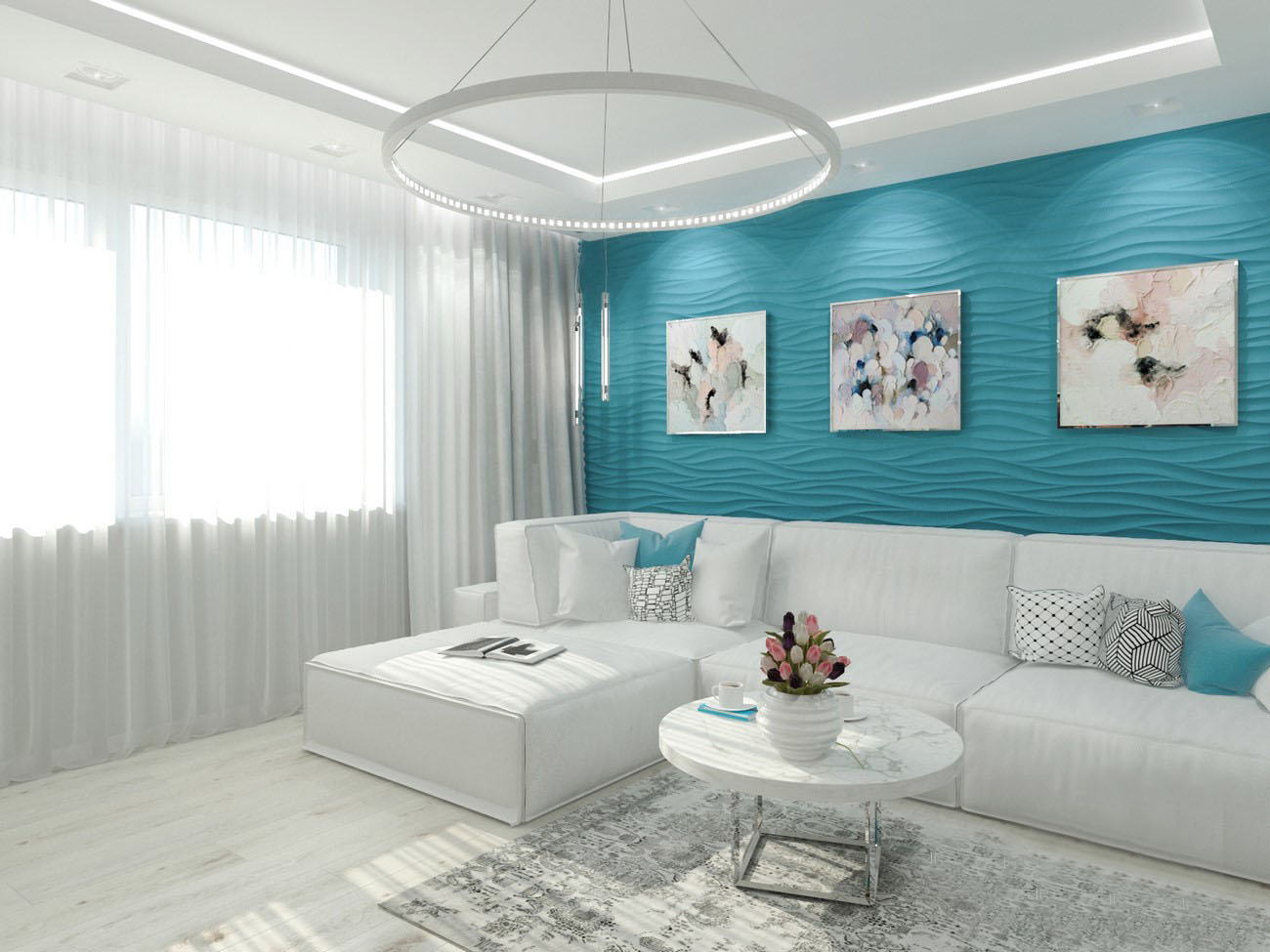
White walls will be the basis for creating the character of the living room. For a dark living room, white will be a salvation, there will be more light in the room.
Note! You should not decorate the room exclusively in white, as this will create an uncomfortable atmosphere in the hospital ward.
Black
The opinion that a living room in black tones looks dull and gloomy is mistaken. With the right approach, this color will become the personification of elegance, chic and excellent taste. However, this effect can only be achieved in a spacious and well-lit room.
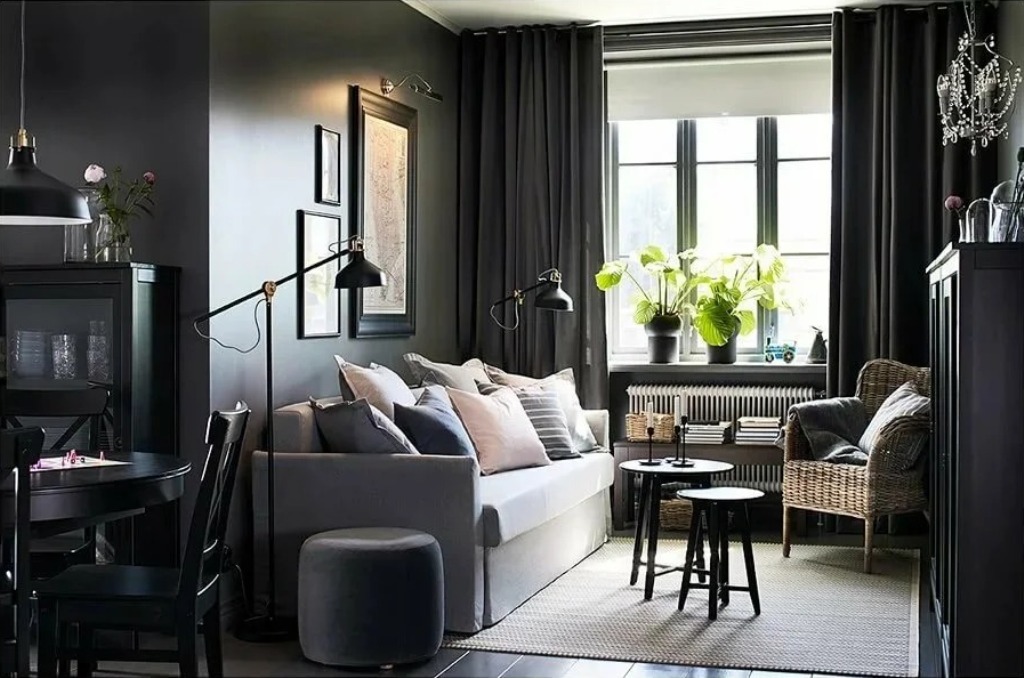
Chipping large areas into black is acceptable when mixing the main shade with other tones to remove depressive color perception.
Black can be used as accent and accent, or it can be combined with other colors such as red, white, light gray and green.
Brown
It is a calm and eye-pleasing color that is perceived differently depending on the combination. So, with sand, green or orange, an association with nature will be created, and a combination with milk, chocolate and beige tones will transfer into the atmosphere of coffee drinks and sweets. Also, brown is successfully complemented by blue, white, blue and pink.

It carries confidence, resilience, poise, creates comfort.
Beige
It is a versatile option that can be combined with almost any color and is suitable for use in many styles. Beige calms and creates a homely atmosphere. Looks best in a room in peach tones, as well as in combination with golden, white, brown.
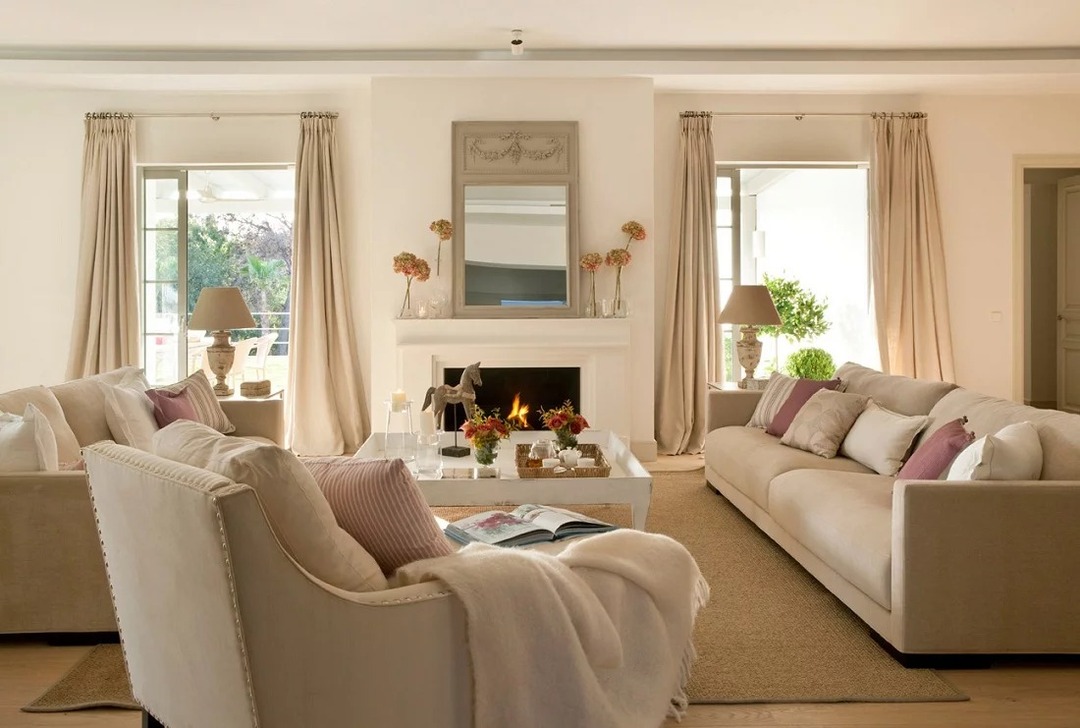
This color scheme can be called universal, it is combined with literally any interior style.
Orange
Like yellow, it exudes the charm of summer. It is an energetic and juicy color that can energize you. Orange is best used in combination with another, quieter color, such as white, milky, sand, beige or green.
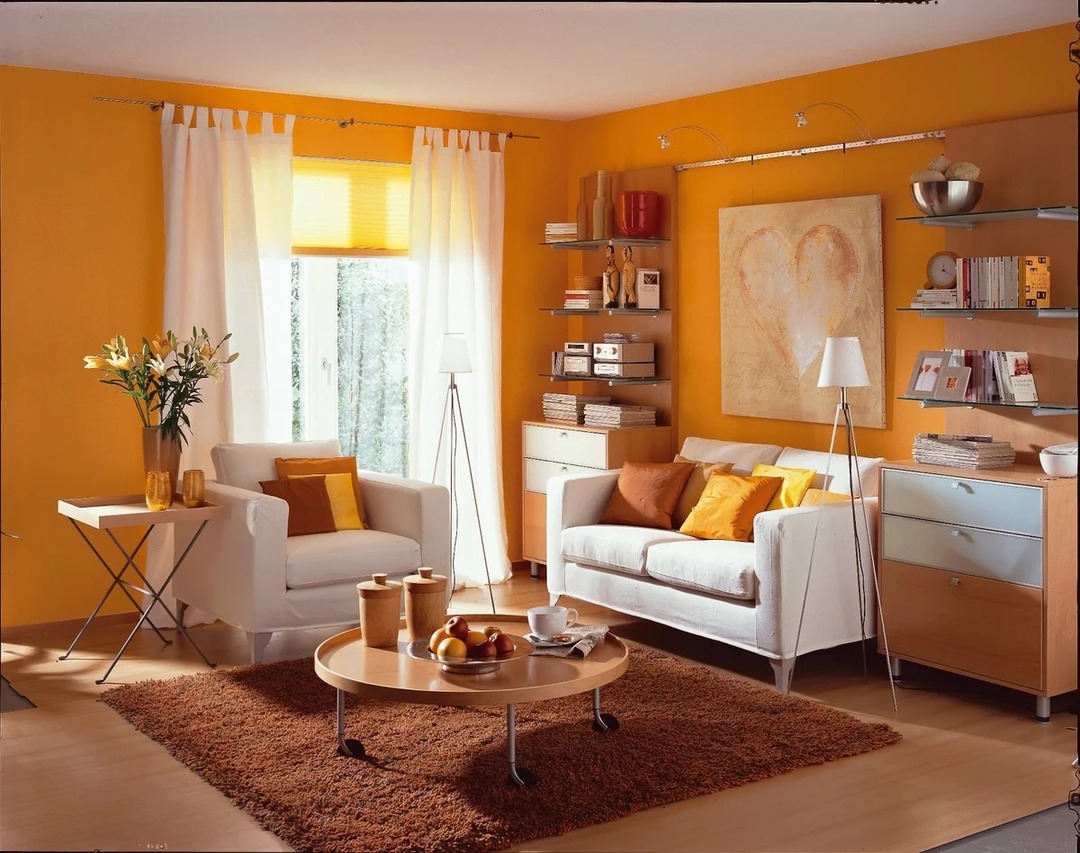
Orange is the color of joy, fun. Perfectly lifts the mood, releases emotions. Gives inner balance and spiritual harmony.
Red
This color is suitable only for its true lovers, because for them it will serve as a source of energy. Otherwise, a living room in red tones can be annoying, overloading the vision.
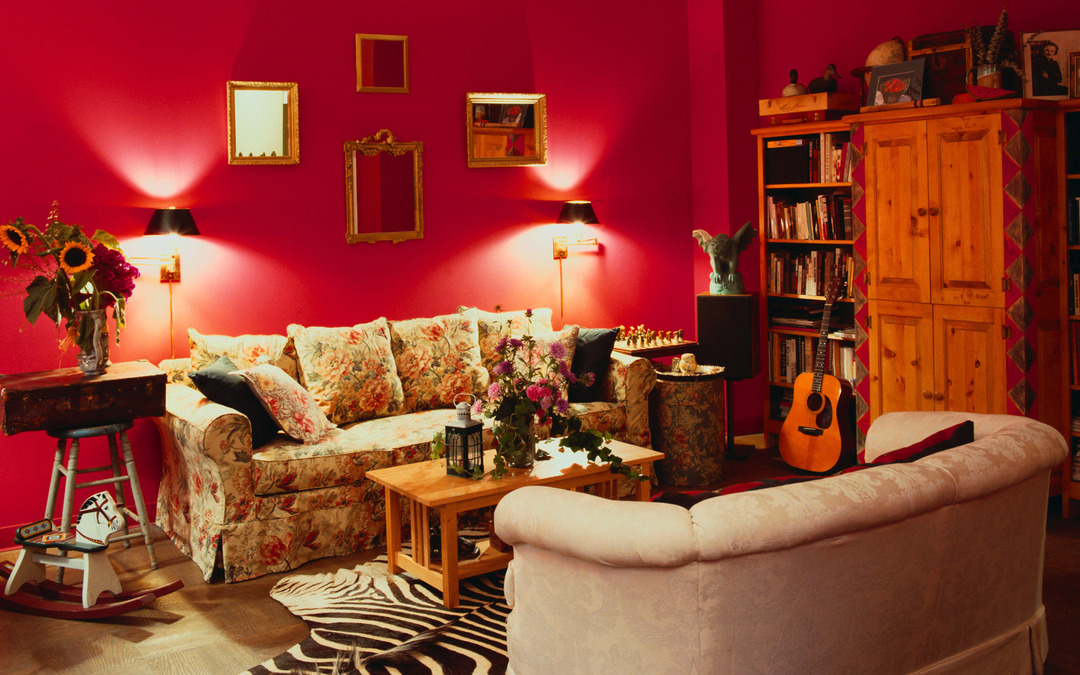
It is the color of emotions, rage, love, passion. A person is able to evoke decisiveness in achieving his own goal. It also energizes you with sexual energy.
Note! The room will acquire expressiveness even if red is used only in the form of small additions, for example, souvenirs or curtains.
It goes well with white, black, golden and peach colors in the interior of the living room.
Violet
If you choose deep purple, then the living room will take on a luxurious look and royal elegance. At the same time, the lavender shade will successfully fit into a room decorated in the Provence style. It is best to combine this color and its shades with black, white, silver, brown and green.
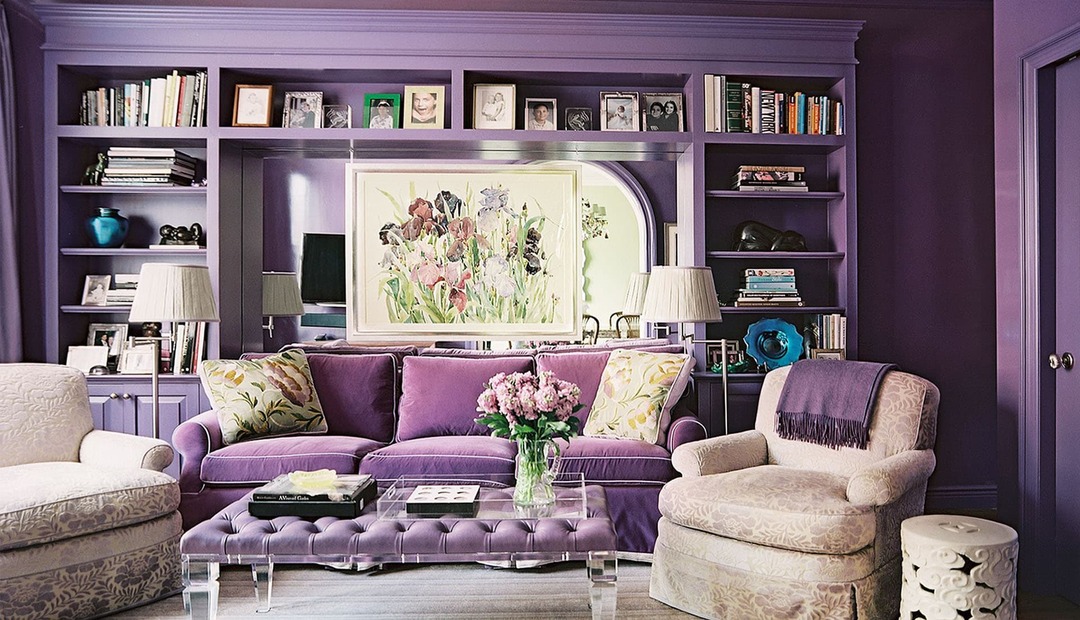
The color is laconic, it is best used for painting large areas.
Blue
This color is optimal for active and cheerful people, because it is able to nourish with positive energy. It is often used for bedrooms, however, it looks very harmonious in the hall. In large and light rooms, deep blue can dominate or be combined with other tones such as turquoise, white, woody, blues, and yellows. In a small living room, it is better to highlight some design details in blue.
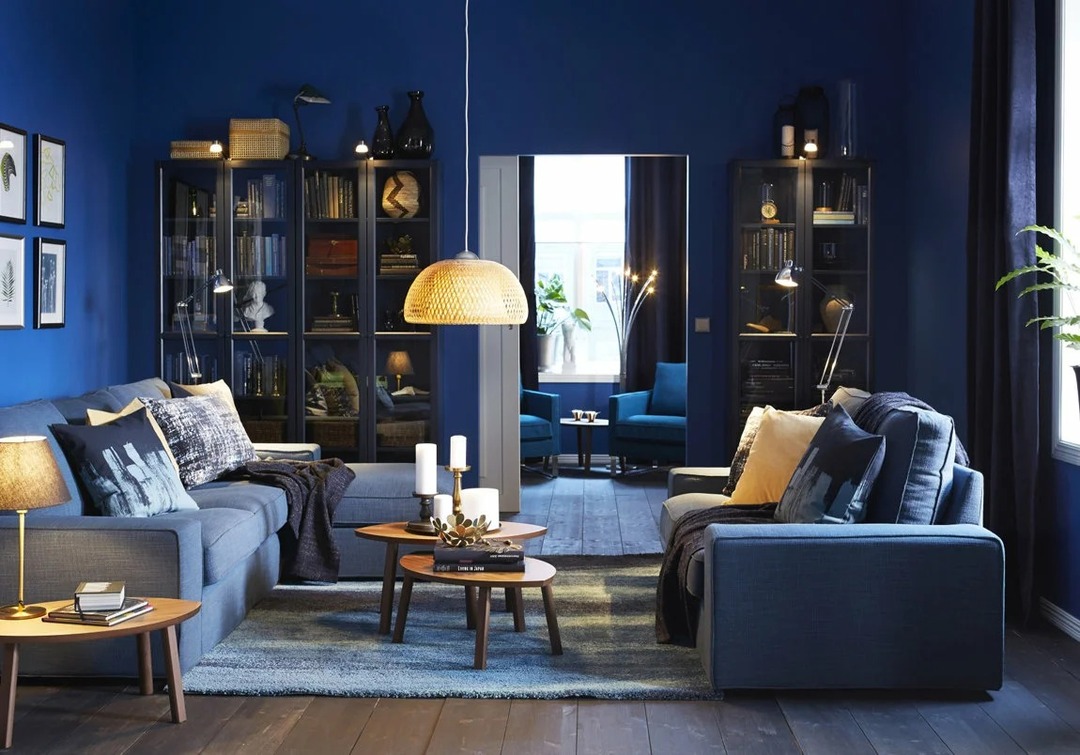
This color scheme is combined with monochromatic colors and requires warm accents with equal saturation to maintain the temperature.
Green
It is a pleasant and soothing color that evokes associations with nature and living vegetation. This effect can be used by combining green with beige, brown, orange and sandy tones, as well as white and yellow colors.
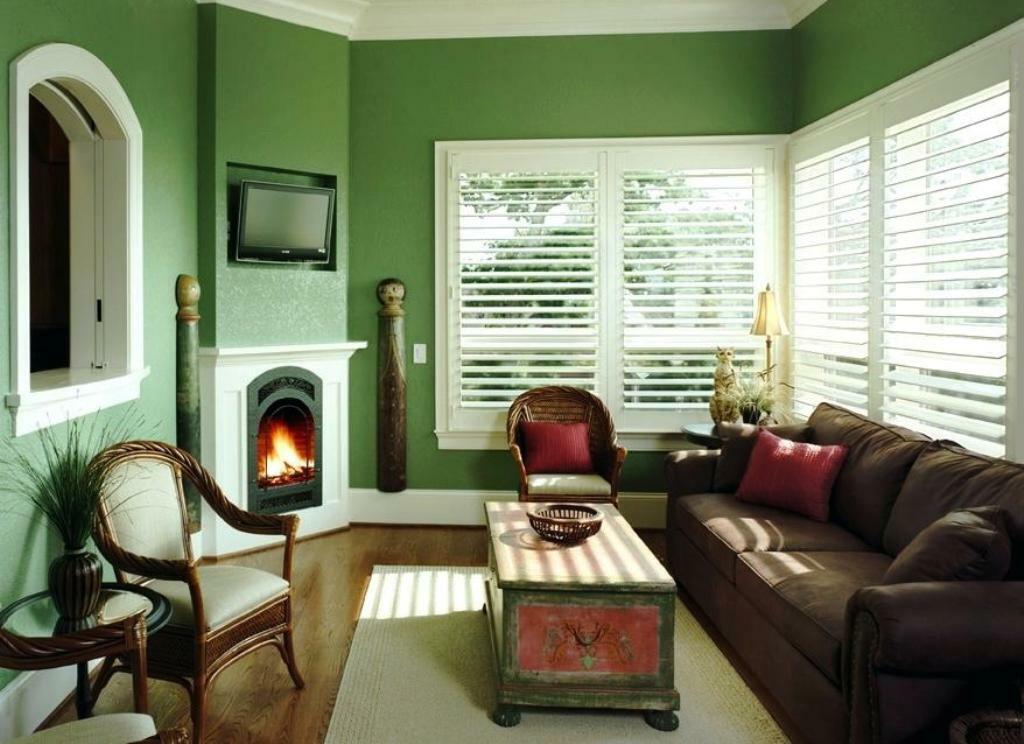
Looks good as an accent color. In combination with white, it refreshes the interior, evens out the temperature.
Zoning a room using the right interior color
Zoning with color is a rather interesting and effective technique for visual demarcation of space. Usually, furniture, partitions or podiums are used to separate areas, however, separation by wall decoration creates a much more sophisticated look. So, for example, if the living room is decorated in beige tones, then the corner with the sofa can be separated in yellow.
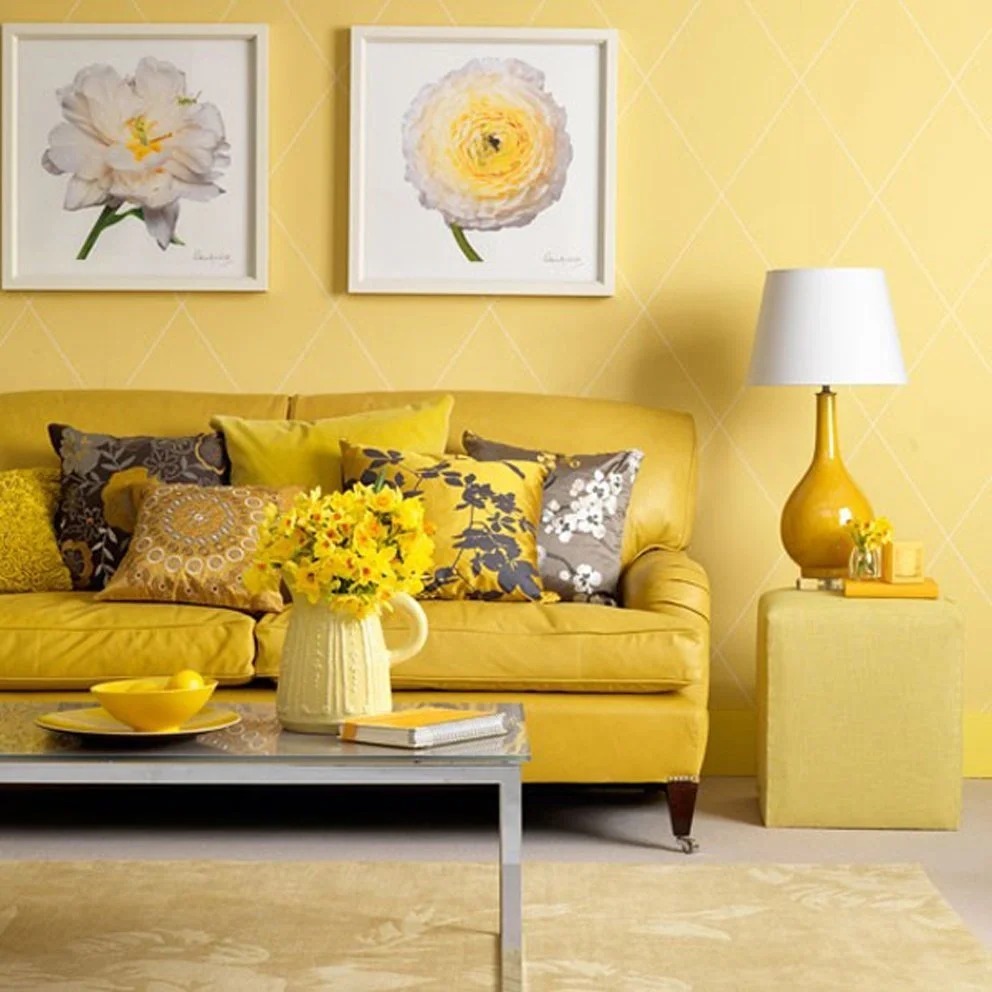
Yellow is a warm, bright tone that increases overall concentration and stimulates quick decision-making.
Note! For walls painted in gray, you can use another option - zoning by means of paintings or patterns.
Tips for the right color combination in the living room interior
When choosing a color, you should rely not only on personal preferences, but also on the established rules of color combination. An unsuccessful combination of colors can cause not only dissonance in the interior, but also psychological discomfort.
The combination rules are as follows:
- Use a range of shades within the same color, diluting the palette with a neutral companion.
- Apply shades that are in harmony with each other. So, there are universal colors - black, white, beige and gray, and they can be used as the basis of the interior, diluting with bright accents.
- Choose a contrasting color combination. To determine which of them combine successfully, you need to use the color wheel. In this case, contrasts should not be used in equal proportions, and one of the shades should be larger.
- Use adjacent tones, the so-called analog triad. It is determined by the same color wheel. For example, this is a combination of green with blue and cyan.
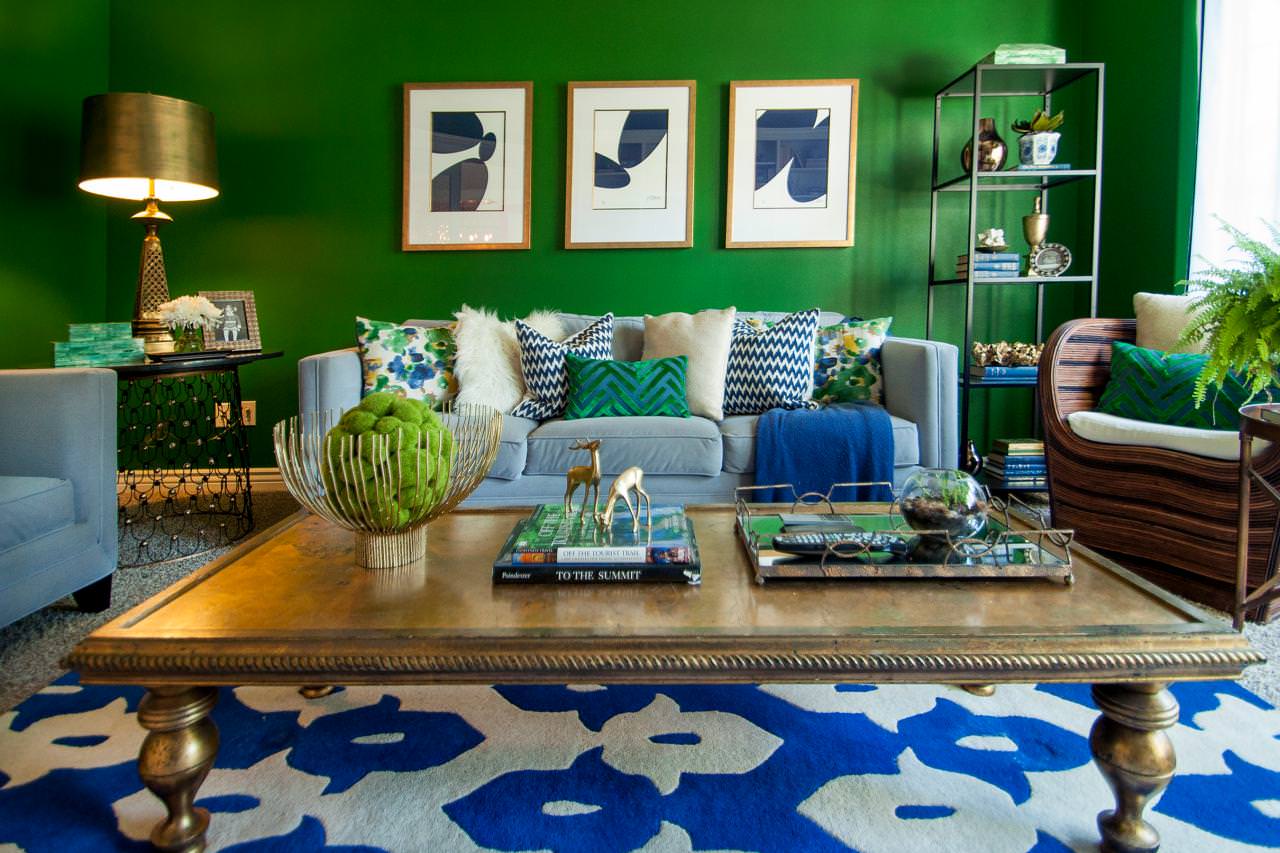
Complementary compatibility is obtained from complementary colors; the effect is enhanced by repeating the placement of paints in other areas.
Important! The color wheel is a palette of color combinations. When decorating an interior, its use is simply necessary, since it allows you to adhere to harmony in the combination of shades.
VIDEO: Fashionable and bright colors for the living room.
Photos of a well-chosen color for the design of the living room:
Correctly selected color scheme of the living room is the key to maintaining a pleasant and relaxing atmosphere in it, and therefore throughout the apartment. And if you follow the simple rules, the choice of shades will not be difficult.
To better imagine how certain color combinations look in the interior of the living room, you can familiarize yourself with photos of a successful design.

